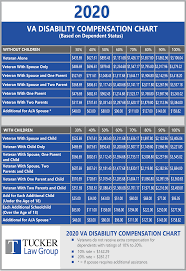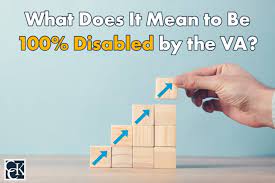Understanding 60 Percent VA Disability Benefits
When a veteran is awarded a 60 percent disability rating by the Department of Veterans Affairs (VA), it means that they have been determined to have a significant level of disability resulting from their military service. This rating is based on the severity of the veteran’s condition and how it impacts their ability to function in daily life.
Receiving a 60 percent disability rating entitles the veteran to a range of benefits, including monthly disability compensation payments, access to healthcare through the VA system, vocational rehabilitation services, and more. These benefits are designed to provide support and assistance to veterans who are dealing with service-related disabilities.
It’s important for veterans with a 60 percent disability rating to stay informed about their benefits and rights. They may also be eligible for additional benefits based on their specific circumstances, so it’s recommended that they work closely with a VA representative or advocate to explore all available options.
Overall, a 60 percent VA disability rating signifies a significant level of impairment due to military service, and veterans should take advantage of the resources and support available to them through the VA system.
Top 5 Advantages of a 60 Percent VA Disability Rating: Financial, Health, and Vocational Support for Veterans
- Monthly disability compensation payments to support the veteran financially.
- Access to healthcare through the VA system for medical treatment and services.
- Vocational rehabilitation services to help veterans re-enter the workforce.
- Possible eligibility for additional benefits based on individual circumstances.
- Recognition of significant impairment due to military service, ensuring proper support and assistance.
Six Drawbacks of a 60 Percent VA Disability Rating: Financial Shortfalls, Healthcare Limits, and Societal Challenges
- Monthly disability compensation may not fully cover all financial needs.
- Limited access to certain healthcare services outside of the VA system.
- May face challenges in finding suitable employment due to disability limitations.
- Potential stigma or discrimination in society related to visible disabilities.
- Complex paperwork and bureaucracy involved in maintaining disability benefits.
- Dependency on VA for ongoing support and services, which may be subject to changes.
Monthly disability compensation payments to support the veteran financially.
Receiving a 60 percent VA disability rating comes with the significant benefit of monthly disability compensation payments that provide crucial financial support to the veteran. These payments are designed to help alleviate the financial burden that may arise due to the veteran’s service-related disability. By receiving regular compensation, veterans with a 60 percent disability rating can better manage their expenses and focus on their well-being without added financial stress.
Access to healthcare through the VA system for medical treatment and services.
One significant advantage of receiving a 60 percent VA disability rating is the access to healthcare through the VA system for medical treatment and services. This benefit ensures that veterans with service-related disabilities can receive the necessary care they need to manage their conditions effectively. By accessing healthcare services through the VA system, veterans can receive specialized medical treatment, prescription medications, rehabilitative services, mental health support, and more, all tailored to address their specific healthcare needs. This access to comprehensive healthcare plays a crucial role in improving the overall well-being and quality of life for veterans with a 60 percent disability rating.
Vocational rehabilitation services to help veterans re-enter the workforce.
One significant advantage of receiving a 60 percent VA disability rating is the access to vocational rehabilitation services aimed at assisting veterans in reintegrating into the workforce. These services provide valuable support and resources to help veterans develop new skills, explore career options, and overcome any barriers they may face in returning to work. By offering tailored guidance and training programs, vocational rehabilitation services play a crucial role in empowering veterans to pursue meaningful employment opportunities and achieve greater financial independence.
Possible eligibility for additional benefits based on individual circumstances.
One significant advantage of receiving a 60 percent VA disability rating is the potential eligibility for additional benefits tailored to individual circumstances. Veterans with this rating may qualify for supplemental benefits that address specific needs or challenges they face due to their service-related disabilities. These additional benefits can provide further support and assistance, ensuring that veterans receive the comprehensive care and resources necessary to improve their quality of life and well-being.
Recognition of significant impairment due to military service, ensuring proper support and assistance.
Receiving a 60 percent VA disability rating provides veterans with the crucial recognition of the significant impairment they have incurred as a result of their military service. This acknowledgment ensures that veterans are eligible for proper support and assistance tailored to their specific needs. By acknowledging the impact of their service-related disabilities, veterans can access the necessary resources and benefits to help them navigate daily life more effectively and improve their overall well-being.
Monthly disability compensation may not fully cover all financial needs.
One significant drawback of receiving a 60 percent VA disability rating is that the monthly disability compensation may not fully cover all financial needs. While the compensation provides essential support, it may not be sufficient to meet all expenses, especially for veterans with families or complex medical needs. This shortfall can create financial challenges and put additional strain on veterans already dealing with service-related disabilities. It’s crucial for veterans in this situation to explore other sources of financial assistance and resources to ensure their overall well-being and stability.
Limited access to certain healthcare services outside of the VA system.
One con of having a 60 percent VA disability rating is the limited access to certain healthcare services outside of the VA system. While veterans with this rating are entitled to healthcare through the VA, they may face challenges in receiving specialized care or accessing certain medical facilities that are not part of the VA network. This limitation can sometimes result in delays in receiving necessary treatments or services that may be more readily available outside of the VA system. Veterans with a 60 percent disability rating may need to navigate additional hurdles to access non-VA healthcare services, which can impact their overall quality of care and treatment options.
May face challenges in finding suitable employment due to disability limitations.
One of the cons of receiving a 60 percent VA disability rating is that veterans may face challenges in finding suitable employment due to their disability limitations. The level of disability can impact a veteran’s ability to perform certain job duties, which may limit their options for employment. This can lead to frustration and financial strain as veterans navigate the job market while dealing with their service-related disabilities. It is important for veterans in this situation to explore vocational rehabilitation services and other resources available to help them find meaningful employment opportunities despite their limitations.
Potential stigma or discrimination in society related to visible disabilities.
One potential con of receiving a 60 percent VA disability rating is the risk of facing stigma or discrimination in society, particularly related to visible disabilities. Individuals with visible disabilities may encounter negative attitudes, stereotypes, or barriers that can impact their social interactions, employment opportunities, and overall well-being. This stigma and discrimination can create additional challenges for veterans already dealing with the effects of their service-related disabilities, highlighting the importance of promoting awareness, understanding, and inclusivity within communities to support those with disabilities.
Complex paperwork and bureaucracy involved in maintaining disability benefits.
One significant drawback of having a 60 percent VA disability rating is the complex paperwork and bureaucracy involved in maintaining disability benefits. Veterans often find themselves navigating through a maze of forms, documentation requirements, and administrative procedures to ensure their benefits are not disrupted. The intricate nature of the process can be overwhelming and time-consuming, adding an additional layer of stress for veterans already dealing with their disabilities. This bureaucratic challenge can sometimes hinder veterans from receiving the support they are entitled to, highlighting the need for improved efficiency and accessibility in the system to better serve those who have served our country.
Dependency on VA for ongoing support and services, which may be subject to changes.
One significant drawback of receiving a 60 percent VA disability rating is the dependency it can create on the VA for ongoing support and services. Veterans relying on these benefits may find themselves vulnerable to changes in policies, funding, or regulations within the VA system. This uncertainty can lead to disruptions in care, delays in receiving necessary services, or adjustments to benefits that impact their quality of life. It’s essential for veterans with a 60 percent disability rating to stay informed and proactive in advocating for their needs to mitigate the risks associated with potential changes in VA support and services.




